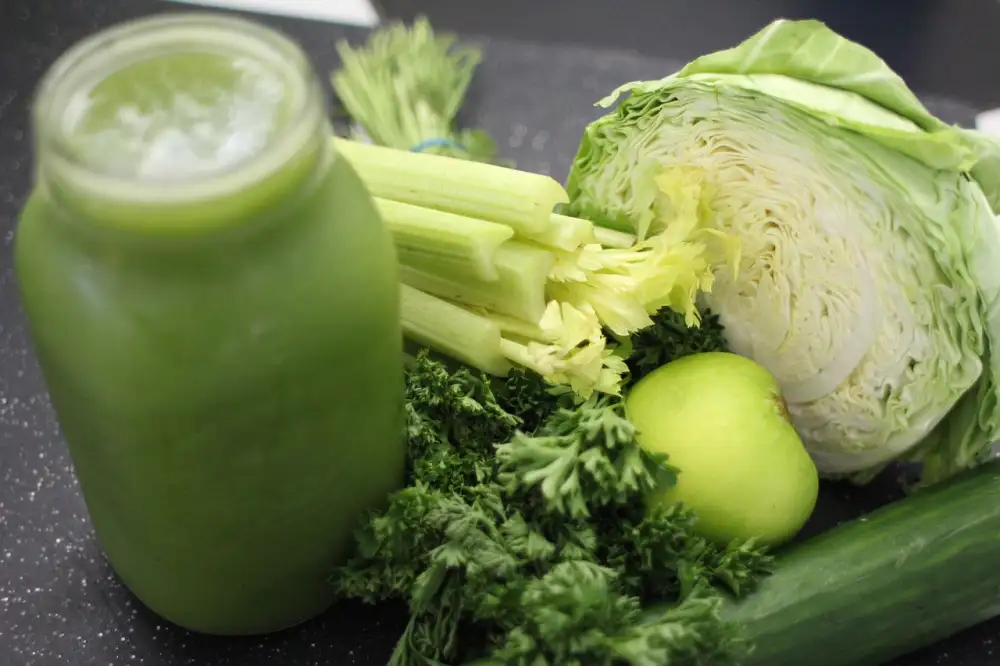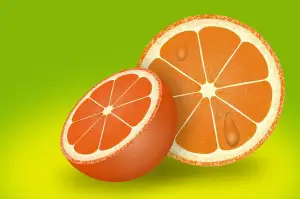Trimming Down with Tasty Weight Loss Meals: A Delicious Path to a Healthier You

- Importance of a Healthy Diet for Weight Loss
- Key Components of Weight Loss Meals
- Incorporating Lean Protein Sources in Weight Loss Meals
- Including Fiber-Rich Foods for Satiety and Digestive Health
- Choosing Low-Glycemic Index Carbohydrates for Stable Blood Sugar Levels
- Incorporating Healthy Fats for Nutrient Absorption and Satiety
- Portion Control and Balanced Macronutrient Ratios in Weight Loss Meals
- Meal Prepping and Planning for Successful Weight Loss
- Delicious and Nutritious Weight Loss Meal Ideas
When it comes to losing weight, one of the most important factors is maintaining a healthy diet. While exercise is crucial, what you put into your body plays a significant role in shedding those extra pounds. That's where weight loss meals come in. These meals are specifically designed to help you trim down while still enjoying delicious and satisfying food. By incorporating the right components and making smart choices, you can embark on a journey towards a healthier you. In this article, we will explore the key components of weight loss meals and provide you with some tasty meal ideas to help you get started on your path to success. So let's dive in and discover how these meals can be both nutritious and enjoyable!
Importance of a Healthy Diet for Weight Loss
The importance of a healthy diet for weight loss cannot be overstated. While exercise is essential for overall health and fitness, it is the food we consume that plays a crucial role in shedding those extra pounds. A balanced and nutritious diet not only helps in achieving weight loss goals but also promotes overall well-being. By choosing nutrient-dense foods and avoiding processed and high-calorie options, we can fuel our bodies with the right nutrients while creating a calorie deficit necessary for weight loss. Remember, sustainable weight loss is not about crash diets or deprivation; it's about making long-term changes to our eating habits and embracing a healthier lifestyle.
Key Components of Weight Loss Meals
When it comes to weight loss meals, there are a few key components that should be included. First and foremost, these meals should be nutrient-dense, meaning they provide a high amount of vitamins, minerals, and other essential nutrients while being relatively low in calories.
Another important component is the inclusion of lean protein sources. Protein helps to keep you feeling full and satisfied, which can prevent overeating. Good sources of lean protein include chicken breast, fish, tofu, and legumes.
Fiber-rich foods are also crucial for weight loss meals. Fiber adds bulk to your meals without adding many calories, helping you feel fuller for longer. Some examples of fiber-rich foods include fruits, vegetables, whole grains, and beans.
Choosing low-glycemic index carbohydrates is another key component. These carbohydrates are digested more slowly by the body, leading to a slower rise in blood sugar levels and sustained energy throughout the day. Examples of low-glycemic index carbohydrates include sweet potatoes, quinoa, and whole wheat bread.
Incorporating healthy fats into weight loss meals is important as well. Healthy fats help with nutrient absorption and can also contribute to feelings of satiety. Good sources of healthy fats include avocados, nuts and seeds, olive oil, and fatty fish like salmon.
Lastly, portion control and balanced macronutrient ratios play a vital role in weight loss meals. It's important to have a balance of protein, carbohydrates, and fats in each meal while keeping portion sizes in check.
By including these key components in your weight loss meals, you can create delicious and nutritious dishes that will support your journey towards a healthier you.
Incorporating Lean Protein Sources in Weight Loss Meals
Incorporating lean protein sources in weight loss meals is essential for several reasons. Firstly, protein helps to increase satiety and reduce hunger, making it easier to stick to a calorie-controlled diet. Secondly, protein plays a crucial role in preserving muscle mass during weight loss, which is important for maintaining a healthy metabolism. Lastly, protein has a higher thermic effect of food compared to carbohydrates or fats, meaning that the body burns more calories digesting and metabolizing it. Some excellent sources of lean protein include chicken breast, turkey, fish, tofu, Greek yogurt, and legumes. By including these foods in your weight loss meals, you can ensure that you are getting the necessary nutrients while also promoting fat loss and muscle preservation.
Including Fiber-Rich Foods for Satiety and Digestive Health
Including fiber-rich foods in your weight loss meals is crucial for promoting satiety and maintaining digestive health. Fiber adds bulk to your meals, making you feel fuller for longer periods of time. This can help prevent overeating and unnecessary snacking throughout the day. Additionally, fiber aids in digestion by promoting regular bowel movements and preventing constipation. Incorporate foods such as fruits, vegetables, whole grains, legumes, and nuts into your meals to ensure an adequate intake of fiber.
Choosing Low-Glycemic Index Carbohydrates for Stable Blood Sugar Levels
Choosing low-glycemic index carbohydrates is essential for maintaining stable blood sugar levels and promoting weight loss. Foods with a high glycemic index cause a rapid spike in blood sugar, leading to increased hunger and cravings. On the other hand, low-glycemic index carbohydrates are digested more slowly, providing a steady release of energy and keeping you feeling full for longer. Opt for whole grains like quinoa, brown rice, and oats, as well as legumes, fruits, and vegetables. These nutrient-rich options will not only support your weight loss goals but also contribute to overall good health.
Incorporating Healthy Fats for Nutrient Absorption and Satiety
Incorporating healthy fats into your weight loss meals is crucial for both nutrient absorption and satiety. While it may seem counterintuitive to include fats when trying to lose weight, the key is to choose the right types of fats. Opt for sources such as avocados, nuts, seeds, and olive oil. These foods not only provide essential nutrients like vitamins and minerals but also help you feel fuller for longer periods of time. Including healthy fats in your meals can also enhance the flavors and textures of your dishes, making them more enjoyable and satisfying. Remember, moderation is key when it comes to incorporating fats into your weight loss journey.
Portion Control and Balanced Macronutrient Ratios in Weight Loss Meals
Portion control and balanced macronutrient ratios play a crucial role in weight loss meals. It's important to consume the right amount of food to avoid overeating. Aim for smaller portion sizes that are satisfying but not excessive. Additionally, maintaining a balance between proteins, carbohydrates, and fats is essential. Protein helps to build and repair tissues, while carbohydrates provide energy, and fats aid in nutrient absorption. Striking the right balance will keep you satiated while promoting weight loss.
Meal Prepping and Planning for Successful Weight Loss
Meal prepping and planning is a crucial aspect of successful weight loss. By preparing meals in advance, you can ensure that you have healthy options readily available, making it easier to stick to your diet. Start by creating a weekly meal plan, taking into account your calorie and nutrient needs. Then, make a shopping list and buy all the necessary ingredients. Set aside some time each week to cook and portion out your meals into individual containers. This way, you can grab a pre-portioned meal whenever you're hungry, avoiding impulsive and unhealthy food choices. With proper meal prepping and planning, you'll be well-equipped to achieve your weight loss goals.
Delicious and Nutritious Weight Loss Meal Ideas
1. Grilled chicken breast with roasted vegetables: Season a skinless chicken breast with herbs and spices, then grill it until cooked through. Serve with a variety of colorful roasted vegetables like bell peppers, zucchini, and broccoli.
2. Quinoa salad with mixed greens: Cook quinoa according to package instructions and let it cool. Toss it with mixed greens, cherry tomatoes, cucumbers, and a light vinaigrette dressing for a refreshing and filling salad.
3. Baked salmon with steamed asparagus: Season a salmon fillet with lemon juice, garlic, and dill. Bake in the oven until flaky. Serve alongside steamed asparagus spears for a nutritious and satisfying meal.
4. Turkey lettuce wraps: Cook ground turkey in a skillet with onions, garlic, and your favorite spices. Spoon the mixture onto large lettuce leaves and top with diced tomatoes, avocado slices, and a drizzle of low-sodium soy sauce.
5. Veggie stir-fry with tofu: Sauté an assortment of colorful vegetables like bell peppers, carrots, snap peas, and mushrooms in a small amount of olive oil or low-sodium soy sauce. Add cubed tofu for plant-based protein.
These meal ideas are not only delicious but also packed with nutrients to support your weight loss journey while keeping you satisfied throughout the day.
In conclusion, incorporating weight loss meals into your daily routine is a delicious and effective way to achieve a healthier lifestyle. By focusing on the key components of lean protein, fiber-rich foods, low-glycemic index carbohydrates, and healthy fats, you can create meals that not only support weight loss but also promote satiety and digestive health. Remember to practice portion control and maintain balanced macronutrient ratios for optimal results. With proper meal prepping and planning, you can set yourself up for success on your weight loss journey. So why wait? Start embracing a healthy lifestyle today with these tasty weight loss meals!
Published: 10. 01. 2024
Category: Health



